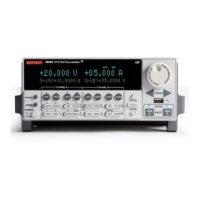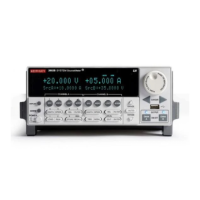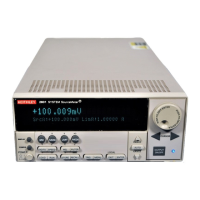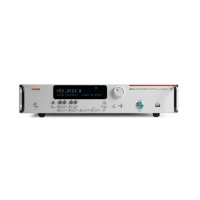B-4 Return to Section Topics 2600S-900-01 Rev. C / January 2008
Appendix B: Frequently Asked Questions Series 2600 System SourceMeter
®
Instruments User’s Manual
Programming triggering
A simple command sequence that sets up triggering is shown below. The first two commands set
the output pulse width on line 1 and program line 2 for falling edge input triggers. The second two
commands assert and then wait for a trigger on lines 1 and 2 respectively.
digio.trigger[1].pulsewidth = 1e-5 -
-
Set line 1 pulse width to 10μs.
digio.trigger[2].mode =
digio.TRIG_FALLING
-
-
Set line 2 mode to falling edge.
digio.trigger[1].assert() -
-
Assert trigger on line 1.
digio.trigger[2].wait(timeout) -
-
Wait for trigger on line 2.
How do I generate a service request?
Reference See “Status byte and service request (SRQ)” and additional information in Appendix
D of the Series 2600 Reference Manual for status model and service request details.
Setting up a service request
The exact programming steps necessary to generate a GPIB service request (SRQ) will vary
somewhat depending on the event(s) intended to generate the SRQ. In general, the steps used
will be as follows:
• Clear all status registers to prevent anomalous events from generating an SRQ.
• Set bits in the appropriate operation: questionable, measurement enable, or transition
register(s).
• Set the proper summary bit in the service request enable register. At least one bit in this
register must always be set, but the exact bit(s) to be set will depend on the desired SRQ
event(s).
Service request programming example
The example below shows how to program the SourceMeter to generate an SRQ when the current
limit on Channel A is exceeded.
status.reset() -
-
Clear all registers.
status.measurement.current_limit.enable =
status.measurement.current_limit.SMUA
-
-
Enable current limit bit in
current limit register.
status.measurement.enable =
status.measurement.ILMT
-
-
Enable status measure
current limit bit.
status.request_enable = status.MSB - Enable status SRQ MSB.
Polling for SRQs
To determine if the SourceMeter is the GPIB device that generated the SRQ, simply serial poll the
unit for the status byte, and test to see if the corresponding summary bit or bits are set. For
example, the following commands request the status byte and prints the result:
status_byte = status.condition
print(status_byte)
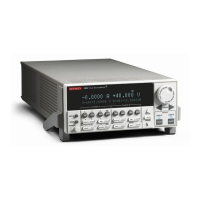
